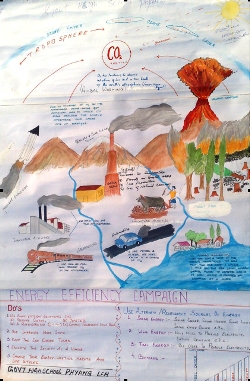
CHILDREN’S PROGRAMME
The seeds of the Children’s Programme were sown in Burlington House - at precisely 11.00, 29 November 2006, during a coffee break at the a conference on ‘Global Neoproterozoic Petroleum Systems – the emerging potential in North Africa’ (Special Publication 326), organised by the Mahgreb Petroleum Research Group at University College London (UCL). This non-profit alliance delivers state-of-the-art geoscience research and training for energy and hydrocarbon exploration and development in North Africa, Middle East and Indian subcontinent. It has alliances with universities and academic institutes around the world, is funded by industry, and governed by a Scientific Advisory Board.
One attendee – Professor Bhat of the University of Jammu (India) – was invited to organise a follow-up conference in Jammu, and so it was there in early 2008 that the journey of the Children’s Programme truly began as Eni – with the University of Jammu and UCL – sponsored the first ‘Children’s Education Programme and Energy Efficiency Campaign’.
The programmes are now international, but began in India. To date, the programme has been presented seven times in urban and rural India; in Jammu, Srinagar, Kargil and Leh in Jammu & Kashmir State (Himalayas and foothills), in Jodhpur and Jaiselmer in Rajasthan State (Thar Desert) and in Hazaribagh in Jharkand State (Gondwana Basin). Each area presents a different energy scenario and cultural diversity, though they are comparable in terms of energy challenges.
Twice a year for the last three years the Children’s Programme has been conducted for 100 to 150 secondary school children and their teachers in Northern India. The programme consists of lectures and practical workshops in petroleum geology, oil & gas exploration, production technology, global warming and energy efficiency. They are always wonderful days full of youthful excitement, enthusiasm and hope for the future.
The children, aged between 14 and 16, are chosen by their schools and drawn from all schools in their area. One teacher accompanies from each school. Most children come from very remote and sometimes high-altitude areas, and often spend days travelling on poorly maintained tracks. The excitement of the programmes, spending time in the regional capital and mingling with ‘exotic’ people seems to outweigh all their difficulties. Many of the children have never even had the opportunity to visit their local ‘big town’. Such is their enthusiasm that one group of girls travelled by bus for two days and while another batch showed up after walking for hours after snow blocked the road.